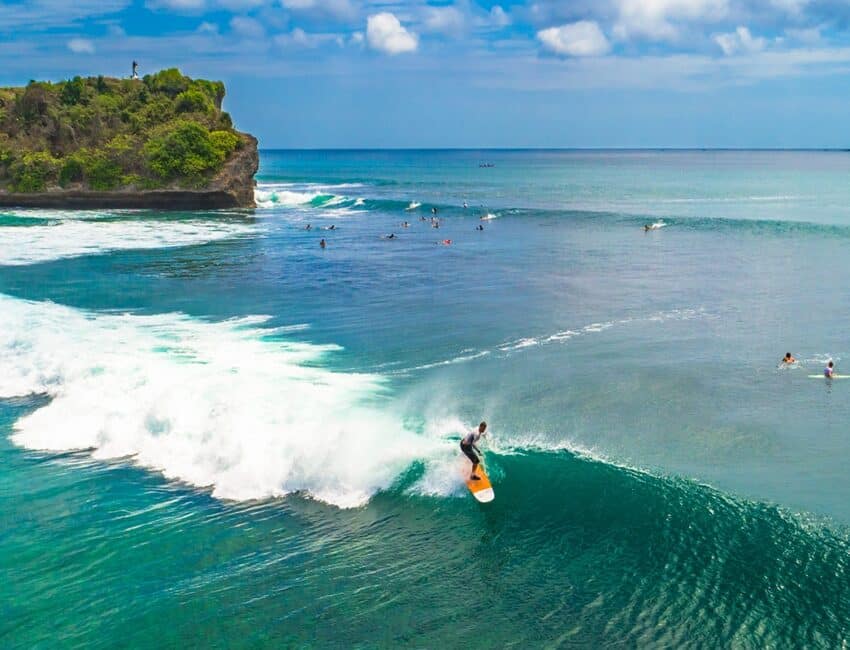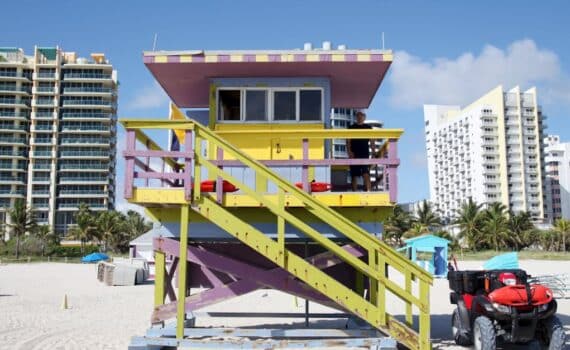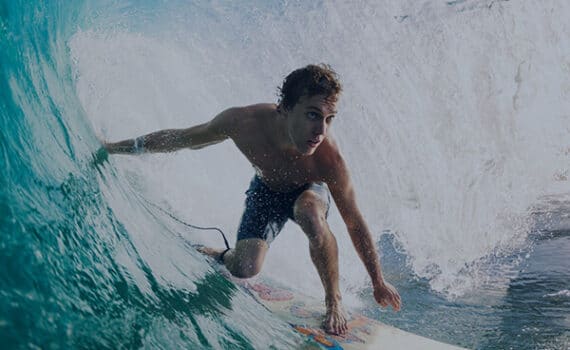Did you know there are 35 million wave riders worldwide? That’s a huge community of surf lovers! But here’s the bummer – our awesome sport is secretly hurting the oceans we love so much.
The shocking truth about our gear:
- Each regular surfboard pumps out 105 pounds of CO2 during production
- Standard wetsuits stick around for centuries in landfills
- The sunscreen we slather on washes toxic chemicals into the sea
The problem is real, but don’t hang up your board just yet! Awesome eco-friendly options are popping up everywhere. New green boards cut CO2 emissions down to just 74 pounds. Plant-based surf products are making waves in the industry too!
Ready to ride responsibly? The future of surfing looks bright – but only if we make smart choices now. Let’s protect our favorite breaks for the next generation of wave chasers!
The Surf Lover’s Dilemma: Trashing What We Treasure
Weird, right? We worship the ocean but hurt it at the same time. This crazy contradiction sits at the core of today’s surf culture.
When Passion Misses the Point
We travel worldwide chasing epic waves, but our love for the ocean doesn’t always mean we protect it. The best breaks often sit near nature’s climate-fighting superstars:
- Mangroves
- Coastal forests
- Seagrasses
Mind-blowing fact: One square mile of mangroves captures carbon equal to 90,000 cars’ annual emissions. Yet only 3% of these crucial surf ecosystems get any protection.
Our oceans are drowning in plastic. By 2050, scientists predict more plastic than fish in our seas. Every day, over 8 million plastic pieces enter the ocean – harming the marine life we all love watching between sets.
Our Surfing Footprint Keeps Growing
Let’s face it – our gear is part of the problem. Regular surfboards come from petroleum materials that pump toxins into the air. Every time we paddle out, our wetsuits shed tiny plastic bits into the water.
Surf tourism creates massive headaches for local spots like Tofino:
- Crowded lineups and trash everywhere
- Garbage systems that can’t handle the influx
- Locals priced out (groceries cost 12% more than nearby areas)
- Native cultural sites getting trampled
Why We Don’t Notice (Or Care)
Despite spending more water time than most people, many surfers don’t see how they’re hurting their playground. Why?
The “replace, don’t repair” culture keeps us buying new stuff without thinking about consequences. Many of us think, “It’s just one board” – forgetting there are millions of us making the same choices. Plus, the surf industry remains deeply connected to petroleum products.
The result? Less than a third of surf ecosystems worldwide have any protection. The gap between our wave-riding passion and our actual behavior needs immediate attention from everyone who loves to surf.
When Surf Culture Clashes with Ocean Care
Talk about mixed messages! Surfers call themselves ocean protectors while our daily choices hurt the very waves we ride. This disconnect runs deep in surf culture.
The Buy-More Mindset
Remember when surfing was all about connecting with nature? Now it’s morphed into a shopping spree. Big surf brands push new collections multiple times yearly, keeping us buying stuff we don’t need.
The 90s and 2000s were especially wasteful. Brands like Billabong and Quiksilver went wild with expansion, creating what many call “the epitome of materialism and consumerism”.
This isn’t just about t-shirts and boardshorts:
- The industry cranks out 750,000 new surfboards annually
- Most use materials and processes that harm our oceans
- We know better, but keep buying anyway
How Instagram Ruins Secret Spots
Social media has completely changed our relationship with the ocean. The average person spends seven hours daily scrolling (that’s 40% of your waking life!). These platforms showcase perfect waves in exotic locations, creating major problems:
- Once-secret spots get exposed through location tags
- Everyone feels pressure to fly around the world for photo ops
- Focus shifts from ocean health to looking cool in pictures
- The magic of discovery disappears
Looking good online has become “the new formula for apparent success and artificial happiness” – and our oceans pay the price.
What We Say vs. What We Do
“We want people to see that the quality of the surfing experience depends on the health of these ecosystems”. Yet when we travel to surf, it’s mostly “a selfish endeavor” where “people show up to tap into a natural resource without giving thought to their impact”.
Researchers call this “The Surfer-Environmental Paradox”. We talk about being ocean guardians while booking flights that leave massive carbon footprints.
Time to stop treating beaches like we own them and start acting like the caretakers our oceans desperately need!
Your Board’s Dirty Secret: What Surf Gear Costs Our Oceans
That shiny new surfboard looks amazing, but hides a nasty environmental secret. Your favorite gear might be trashing the very waves you love to ride!
What’s Really In Your Surfboard?
Let’s get real about what we’re riding. The typical surfboard is basically “a slab of petroleum-spawned polyurethane slathered in layers of toxic polyester resin”.
The ugly truth about boards:
- 80% of all surf equipment comes straight from the petrochemical industry
- Polyurethane makes up about 74% of the surfboard market
- Manufacturing releases harmful chemicals like styrene and toluene into the air
- A 6-pound shortboard creates an extra 10 pounds of waste materials
Your Wetsuit’s Dirty Footprint
That cozy neoprene keeping you warm? Total ocean killer. Made from petrochemical chloroprene, wetsuit production has been linked to cancer rates 50 times higher than average in factory areas.
The problems don’t stop after production:
- Wetsuits shed microfibers every time you paddle out
- These tiny plastics are a major source of ocean pollution
- They contain nasty chemicals like phthalates and BPA
- Tossed wetsuits take hundreds of years to break down
All That Other Stuff You’re Buying
Your surf accessories aren’t any better for the ocean. Surf clothing often contains cancer-causing chemicals like antimony and those nasty “forever chemicals” called PFAS.
Crazy fact: 54% of people have no clue about health or environmental issues in their technical clothing. Meanwhile, plastics from these products build up in sea creatures, messing with their hormones and organs.
Ready for the good news? Eco-friendly options are out there! Keep reading to discover how you can gear up without trashing your favorite breaks.
Ride Clean! Awesome Ways to Surf Without Harming Our Oceans
Good news, wave lovers! Eco-conscious surfers are finding better ways to enjoy the stoke while protecting our ocean playgrounds. Check out these game-changing options for your next session!
Green Boards That Still Shred
Performance and planet-friendly can totally go together! Today’s eco-boards seriously rip:
- Firewire’s partnership with Sustainable Surf created boards producing just 74 pounds of CO2 instead of the usual 105 pounds
- UC San Diego scientists developed algae-based foam cores that perform just like regular boards
- Cork decks eliminate the need for fiberglass and wax
- Mushroom-based Mycofoam boards are hitting the market
- Programs like Waste to Waves turn trash into recyclable EPS foam blanks
Easy Green Habits for Every Surfer
Small choices add up to big impact! Start with these simple swaps:
Repair your old gear instead of tossing it. When you do need new stuff, grab a wetsuit made from plant-based Yulex or Billabong’s Natural Rubber that actually breaks down in landfills. Switch to eco-friendly wax made from beeswax or coconut oil. Don’t forget reef-safe sunscreen that keeps you protected without harming coral and fish.
Ocean City Shows How It’s Done
Ocean City is crushing it with coastal conservation! The town teamed up with Go Green OC to build Maryland’s eastern shore’s biggest composting operation. Nearly 30 businesses have joined in, aiming to divert 500-750k pounds of food waste in 2023.
The Ocean City Surf Club rocks regular beach cleanups and runs amazing programs teaching kids to care for our coasts through after-school activities and scholarships.
Surfers Unite for Change
The global surf community is stepping up big time! Save The Waves has created 12 World Surfing Reserves to protect threatened surf ecosystems. Their research shows 85% of the world’s best waves break in biodiversity hotspots that need protection.
Surfrider Foundation chapters worldwide run beach cleanups and awareness campaigns, turning everyday surfers into ocean heroes.
Ready to make your sessions more sustainable? Every eco-friendly choice helps keep our breaks pristine for generations to come!
Catch the Green Wave! The Future of Surfing Starts Now – Surfing Ocean
Surfing stands at a crossroads. Our awesome sport contributes to ocean damage, but exciting changes are happening all around us! The proof is right there in the water – we can absolutely rip waves without wrecking our ocean playground.
Each of us makes a difference. Small swaps create massive impact:
- Eco-boards cut CO2 emissions by 30%
- Plant-based wetsuits break down naturally
- Reef-safe sunscreen keeps marine life healthy
The surf community is stepping up everywhere. From Ocean City’s massive composting program to World Surfing Reserves protecting prime breaks globally, surfers are uniting to save what we love.
We can’t just be wave riders anymore – we need to be ocean guardians. The future of our sport depends on blue seas full of life, not plastic trash.
Ready to join the movement? Grab eco-friendly gear for your next session. Join a beach cleanup this weekend. Share sustainable stoke with your crew. Together we’ll make sure the groms of tomorrow experience the same pure joy we feel dropping into that perfect peeling wave.
The choice is simple: surf green or eventually… don’t surf at all.Show facts


